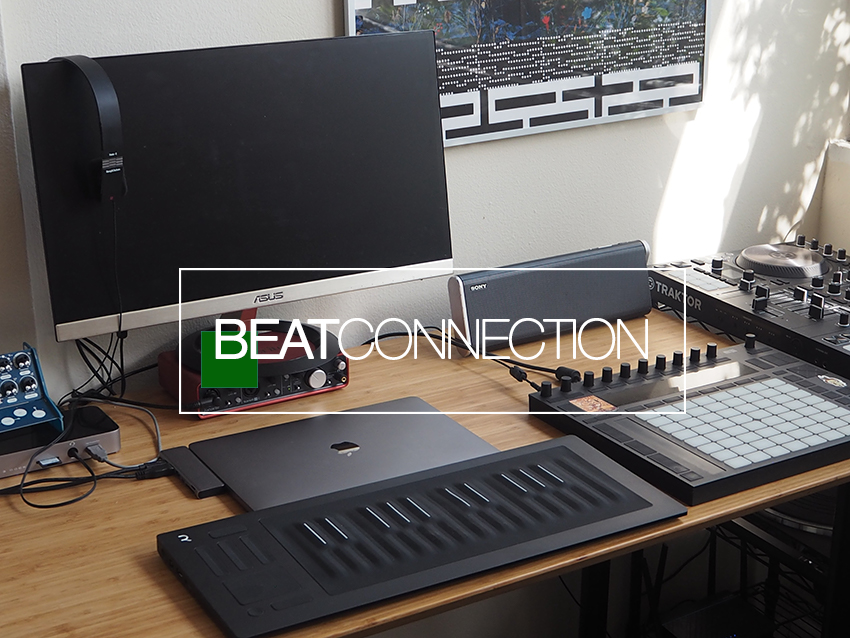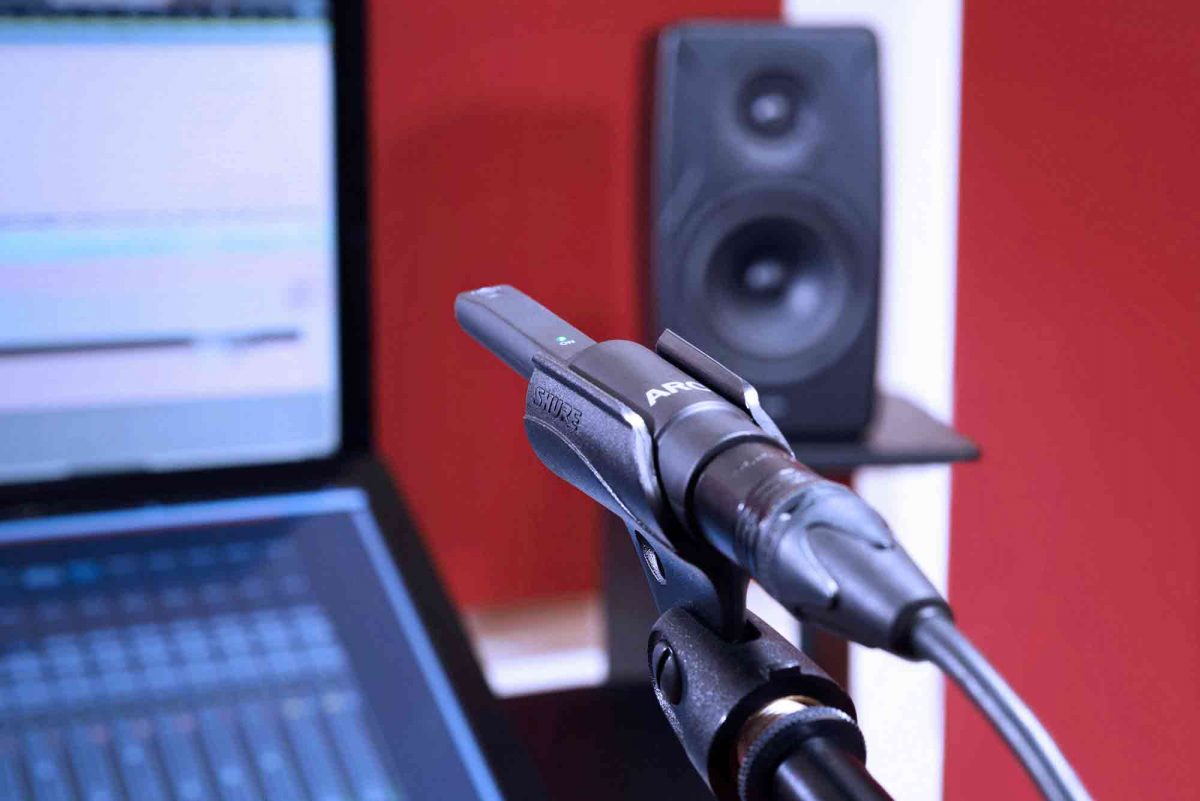After achieving success with their plug-in based ARC room correction mic + software package, IK Multimedia has released an interesting new implementation of ARC: the ARC Studio, a way to room-correct without having to run a plug-in in your DAW. With ARC Studio you get a measurement mic, the ARC 4 software, and a box that you connect between your interface and monitors to deliver constant room correction without running a plug-in, and on your entire audio output instead of just inside your DAW.
This new method of room correction certainly has its advantages. Once you measure your room and connect your speakers and interface to the ARC Studio, your correction is locked in and you don’t have to waste any computer resources running a plug-in inside your DAW. Plus you can listen to reference tracks with correction enabled, without loading them into your session. Once you set up the ARC Studio, you don’t have to worry about it again. ARC Studio also opens up new possibilities for using ARC in living room and home theater applications.
Related: Rethinking Your Home Music Studio
Ready to rethink your home studio and/or your practice room? Heed Diego’s advice on cleaning up and organizing your musical workspace so it works for you! Read »
My original purpose for ARC Studio was for bass correction only, in a room where I have a pair of studio monitors and a powered subwoofer. I had attempted to use ARC software before and wasn’t happy with the result when applied to the full frequency spectrum, but I wanted to see if I could use it to successfully even out the uneven bass response in my room. However, after a bit of experimentation, I ended up using the ARC correction for the full frequency range, since it made the speakers sound so much better. The room I’m using has a couple of very strong peaks and dips in frequency response and I can’t install any sound dampening panels or anything like that to help correct them. If your studio has serious resonance problems like mine, hopefully you can use panels, bass traps, or other treatment to help with the underlying issues — but if you can’t, ARC Studio may be a good option to even out your room’s response.
Setting Up ARC Studio
Setting up the ARC Studio is straightforward — just plug the XLR cables from your interface and your monitors both into the box and you’re ready to go.
Measuring your room’s response is pretty easy and takes about 30 minutes maximum. After plugging the included measurement mic into your interface (you can also use any third-party measurement mic), the ARC 4 software guides you through positioning the mic in 7 or 21 different spots, depending on whether you choose the standard or “Quick” measurement option. There are different options depending on if you’re trying to correct for only the “sweet spot” between the monitors, a wider listening area, or even a large, multi-seat area (such as a home theater setup).
After you’ve finished the measurement process, the ARC 4 app gives you a few options. The one that interested me to try to use ARC Studio for just the bass frequencies is a sliding bar on either end of the frequency map that lets you select which frequencies to apply room correction to (above 50 Hz or below 3 kHz only, etc.) You can also adjust the target frequency curve (e.g. add more bass if that’s what you want), choose how sharply ARC Studio is correcting frequencies (sharp, default, or broad), linear or natural EQ, and you can save and store settings (i.e. storing inside the ARC Studio hardware box for software-free room correction, via USB).
Third Time’s the Charm
I personally had to run the ARC process three times. The first time I chose a wider correction area, but this ended up leaving a null at around 1kHz which left the audio sounding a bit unnatural. This also left the speakers sounding far too bright when I left the correction in its default setting (correcting all frequencies from 0Hz – 20kHz). However, the improvement was noticeable in the bass frequencies, so I set the correction range from 0Hz – 200 Hz.
For the second round of ARCing the room I used the “sweet spot only” correction area. This resulted in a much flatter frequency response in the room (including in non-sweet-spot listening positions), even when set to full-frequency correction, however the treble was much too bright overall. For the third round, I set my monitors’ DSP to flat, instead of the -1.5dB treble dip that I was previously using. This time the correction came out very well, and the room sounds great with full-frequency room correction enabled. The bass response has far fewer peaks and nulls, which makes the low end more consistent, including across genres, and it lets you leave your subwoofer at an optimal level without further adjustment. The midrange and treble are also noticeably cleaner, with smaller details in the mix becoming much easier to hear.
ARC Studio Recommendations
If you’re planning on using ARC Studio to correct your room, here are a few tips:
- Repeat if necessary. If you don’t like the result you’re getting from your first measurement, try again.
- Set your speakers to a flat output. I found that setting my monitors’ built-in DSP to flat gave a better result.
- Turn your sub down. If you like plenty of bass in your monitoring, I recommend turning your sub down a bit while you do the room measurements, so that ARC doesn’t end up cutting out too much bass in the service of delivering a technically flat room response.








Leave a Reply